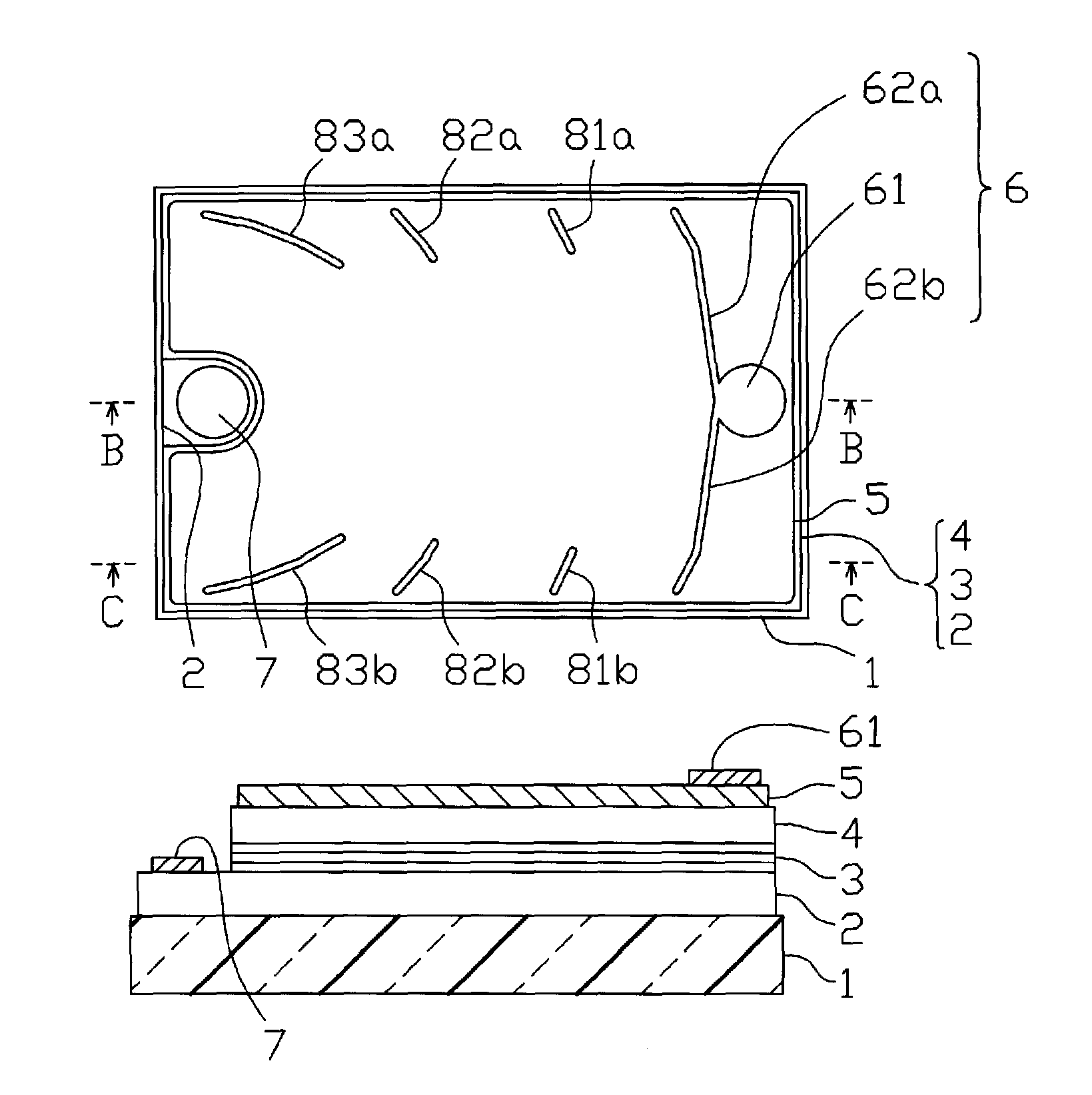Face-up optical semiconductor device and method
a technology of optical semiconductor and face-up, which is applied in the direction of semiconductor devices, basic electric elements, electrical appliances, etc., can solve the problems of lowering light output, uneven light emission distribution, and small light extraction surface of optical semiconductor devices, so as to and reduce the weak light emission region
- Summary
- Abstract
- Description
- Claims
- Application Information
AI Technical Summary
Benefits of technology
Problems solved by technology
Method used
Image
Examples
Embodiment Construction
[0063]A description will now be made below to face-up optical semiconductor devices of the presently disclosed subject matter with reference to the accompanying drawings in accordance with exemplary embodiments.
[0064]FIG. 6 is a perspective view showing a first exemplary embodiment of a face-up optical semiconductor device made in accordance with principles of the presently disclosed subject matter. FIGS. 7A, 7B, and 7C are a top view, a cross sectional view taken along the line B-B in FIG. 7A, and a cross sectional view taken along the line C-C in FIG. 7A, respectively, showing the details of the face-up optical semiconductor device of FIG. 6.
[0065]In FIGS. 6 and 7A to 7C, the basic configuration of the device can be similar to that of the conventional device of FIGS. 4A and 4B while the device can be provided with outside independent electrodes 81a, 81b, 82a, 82b, 83a, and 83b on the transparent electrode layer 5 at regions corresponding to the weak light emission regions 201a and...
PUM
 Login to View More
Login to View More Abstract
Description
Claims
Application Information
 Login to View More
Login to View More - R&D
- Intellectual Property
- Life Sciences
- Materials
- Tech Scout
- Unparalleled Data Quality
- Higher Quality Content
- 60% Fewer Hallucinations
Browse by: Latest US Patents, China's latest patents, Technical Efficacy Thesaurus, Application Domain, Technology Topic, Popular Technical Reports.
© 2025 PatSnap. All rights reserved.Legal|Privacy policy|Modern Slavery Act Transparency Statement|Sitemap|About US| Contact US: help@patsnap.com



